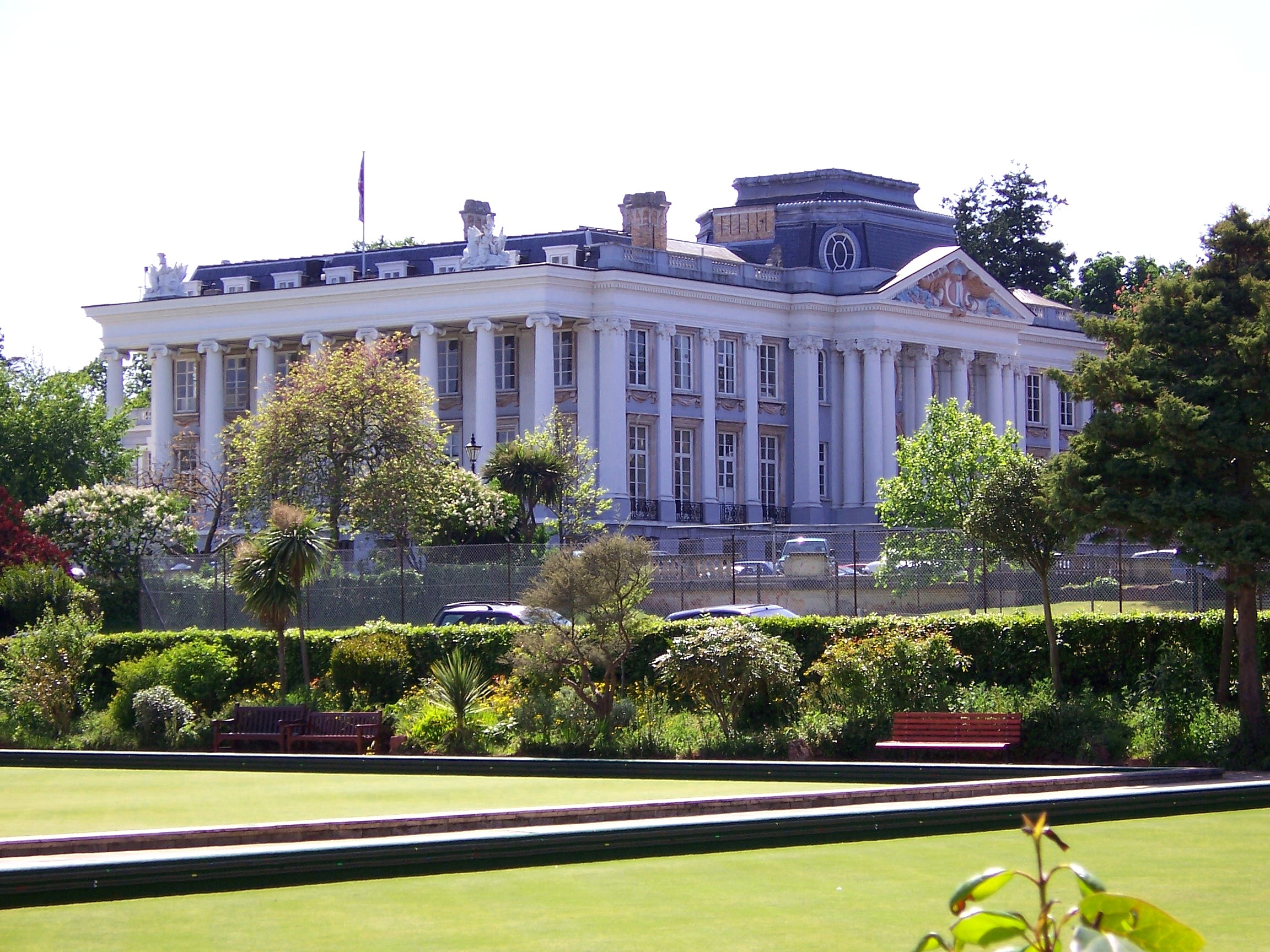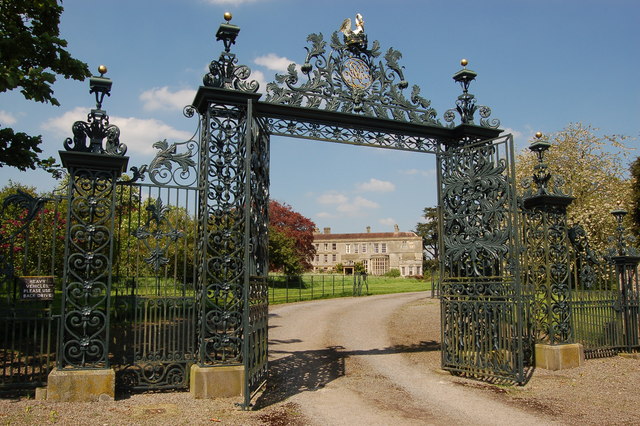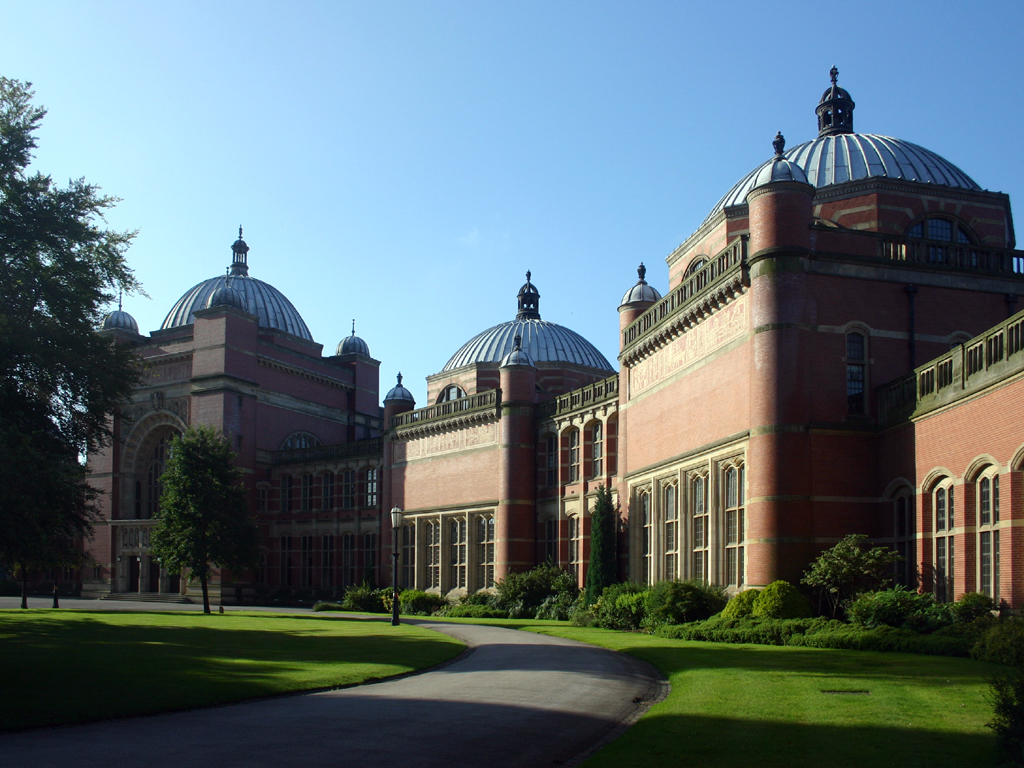|
Sir Walter Blount, 1st Baronet
Sir Walter Blount, 1st Baronet (1594 – 27 August 1654) of Sodington in the parish of Mamble in Worcestershire, was a Member of Parliament for Droitwich in 1624 and supported the Royalist cause in the Civil War. Origins Blount was the eldest son of Sir George Blount, Knight, of Sodington in Worcestershire by his wife Eleanor Norwood, a daughter of William Norwood of Leckhampton of Gloucestershire, and Elizabeth Lygon, daughter of William Lygon and Eleanor Dennis. Career He matriculated at Balliol College, Oxford on 12 October 1610 aged 16 and entered the Inner Temple in 1611. He served as Sheriff of Worcestershire in 1620. In 1624 he was elected Member of Parliament for Droitwich. He was created a baronet on 5 October 1642. He was a Royalist during the Civil War and was taken prisoner by the Parliamentarian forces at Hereford in December 1645, and was imprisoned at Oxford and in the Tower of London. His house at Sodington was burnt down by Parliamentarian soldiers and his est ... [...More Info...] [...Related Items...] OR: [Wikipedia] [Google] [Baidu] |
Armorial Bearings Of The BLOUNT Family Of Grendon, Herefordshire
A roll of arms (or armorial) is a collection of coats of arms, usually consisting of rows of painted pictures of shields, each shield accompanied by the name of the person bearing the arms. The oldest extant armorials date to the mid-13th century, and armorial manuscripts continued to be produced throughout the Early Modern period. '' Siebmachers Wappenbuch'' of 1605 was an early instance of a printed armorial. Medieval armorials usually include a few hundred coats of arms, in the late medieval period sometimes up to some 2,000. In the early modern period, the larger armorials develop into encyclopedic projects, with the ''Armorial général de France'' (1696), commissioned by Louis XIV of France, listing more than 125,000 coats of arms. In the modern period, the tradition develops into projects of heraldic dictionaries edited in multiple volumes, such as the ''Dictionary of British Arms'' in four volumes (1926–2009), or ''J. Siebmacher's großes Wappenbuch'' in seven vo ... [...More Info...] [...Related Items...] OR: [Wikipedia] [Google] [Baidu] |
Paignton
Paignton ( ) is a seaside town on the coast of Tor Bay in Devon, England. Together with Torquay and Brixham it forms the borough of Torbay which was created in 1998. The Torbay area is a holiday destination known as the English Riviera. Paignton's population in the United Kingdom Census of 2011 was 49,021. (Word document) It has origins as a Celtic settlement and was first mentioned in 1086. It grew as a small fishing village and a new harbour was built in 1847. A railway line was opened to passengers in 1859 creating links to Torquay and London. As its population increased, it merged with the villages of Goodrington and Preston. Paignton is around north east of Plymouth and south of Exeter, and has the fourth largest population in Devon. History A Roman burial was discovered in 1993 on the Hookhills estate by a householder digging a patio. At first thought to be Neolithic, it was later radiocarbon dated to be between 230 and 390 CE. The burial is of a young woman ag ... [...More Info...] [...Related Items...] OR: [Wikipedia] [Google] [Baidu] |
Mary Howard, Duchess Of Norfolk (died 1773)
Mary Howard, Duchess of Norfolk (née Mary Blount; ( 1712 – 1773), was a British noblewoman after whom Norfolk Island, a small island in the Pacific Ocean, was named. Early life The youngest of three daughters of Edward Blount (d. 1726) of Blagdon, Paignton in Devon, by his wife Anne Guise, a daughter of Sir John Guise, 2nd Baronet. She was a co-heiress of her father's property. Born into an exiled Roman Catholic family, she spent her adolescence and early years of marriage on the continent. On 26 November 1727, she married Edward Howard, who in 1732 succeeded as the 9th Duke of Norfolk, upon the death of his older brother Thomas Howard, 8th Duke of Norfolk. Activities The pair were socially active, using their position as the highest-ranking peers in the kingdom to promote religious tolerance. As Roman Catholics whose immediate predecessors, the 8th Duke and his wife Maria Shireburn, had supported the Jacobite rising of 1715, Mary and Edward Howard were keen to expre ... [...More Info...] [...Related Items...] OR: [Wikipedia] [Google] [Baidu] |
Sir John Guise, 2nd Baronet
Sir John Guise, 2nd Baronet (c.1654 – November 1695) of Elmore Court, Gloucestershire was an English landowner and Member of Parliament. Life He was born the only son of Sir Christopher Guise, 1st Baronet of the Elmore baronets of Gloucestershire and educated at Christ Church, Oxford, where he matriculated in 1669. He then travelled in France for a while. He succeeded his father to the baronetcy and to Elmore Court in 1670. He acted as a local Justice of the Peace and as a Deputy-Lieutenant of Gloucestershire (?1674-81, 1689-death). He was Mayor of Gloucester for 1690–91 and Vice-Admiral of Gloucestershire from 1691 to his death. He was elected the Member of Parliament for Gloucestershire in February 1679, August 1679 and 1681 but defeated in the election of 1685 by the Court party candidate and forced to take refuge in the Netherlands. He returned in 1688 with William of Orange and then took part in the capture of Bristol as Colonel of a foot regiment. Re-elected for ... [...More Info...] [...Related Items...] OR: [Wikipedia] [Google] [Baidu] |
Motto
A motto (derived from the Latin , 'mutter', by way of Italian , 'word' or 'sentence') is a sentence or phrase expressing a belief or purpose, or the general motivation or intention of an individual, family, social group, or organisation. Mottos (or mottoes) are usually found predominantly in written form (unlike slogans, which may also be expressed orally), and may stem from long traditions of social foundations, or from significant events, such as a civil war or a revolution. A motto may be in any language, but Latin has been widely used, especially in the Western world. Heraldry In heraldry, a motto is often found below the shield in a banderole; this placement stems from the Middle Ages, in which the vast majority of nobles possessed a coat of arms complete with a motto. In the case of Scottish heraldry, it is mandated to appear above the crest. Spanish coats of arms may display a motto in the bordure of the shield. In heraldic literature, the terms 'rallying cr ... [...More Info...] [...Related Items...] OR: [Wikipedia] [Google] [Baidu] |
Nikolaus Pevsner
Sir Nikolaus Bernhard Leon Pevsner (30 January 1902 – 18 August 1983) was a German-British art historian and architectural historian best known for his monumental 46-volume series of county-by-county guides, '' The Buildings of England'' (1951–74). Life Nikolaus Pevsner was born in Leipzig, Saxony, the son of Anna and her husband Hugo Pevsner, a Russian-Jewish fur merchant. He attended St. Thomas School, Leipzig, and went on to study at several universities, Munich, Berlin, and Frankfurt am Main, before being awarded a doctorate by Leipzig in 1924 for a thesis on the Baroque architecture of Leipzig. In 1923, he married Carola ("Lola") Kurlbaum, the daughter of distinguished Leipzig lawyer Alfred Kurlbaum. He worked as an assistant keeper at the Dresden Gallery between 1924 and 1928. He converted from Judaism to Lutheranism early in his life. During this period he became interested in establishing the supremacy of German modernist architecture after becoming aware of ... [...More Info...] [...Related Items...] OR: [Wikipedia] [Google] [Baidu] |
Great Hall
A great hall is the main room of a royal palace, castle or a large manor house or hall house in the Middle Ages, and continued to be built in the country houses of the 16th and early 17th centuries, although by then the family used the great chamber for eating and relaxing. At that time the word "great" simply meant big and had not acquired its modern connotations of excellence. In the medieval period, the room would simply have been referred to as the "hall" unless the building also had a secondary hall, but the term "great hall" has been predominant for surviving rooms of this type for several centuries, to distinguish them from the different type of hall found in post-medieval houses. Great halls were found especially in France, England and Scotland, but similar rooms were also found in some other European countries. A typical great hall was a rectangular room between one and a half and three times as long as it was wide, and also higher than it was wide. It was enter ... [...More Info...] [...Related Items...] OR: [Wikipedia] [Google] [Baidu] |
Sheriff Of Devon
The High Sheriff of Devon is the Queen's representative for the County of Devon, a territory known as his/her bailiwick. Selected from three nominated people, they hold the office for one year. They have judicial, ceremonial and administrative functions and execute High Court Writs. The title was historically "Sheriff of Devon", but changed in 1974 to "High Sheriff of Devon". History The office of Sheriff is the oldest under the Crown. It is over 1000 years old; it was established before the Norman Conquest. It remained first in precedence in the counties, until the reign of Edward VII, when an Order in Council in 1908 gave the Lord-Lieutenant the prime office under the Crown as the Sovereign's personal representative. Under the provisions of the Local Government Act 1972, on 1 April 1974 the office previously known as Sheriff was retitled High Sheriff. The High Sheriff remains the Sovereign's representative in the county for all matters relating to the Judiciary and the mainte ... [...More Info...] [...Related Items...] OR: [Wikipedia] [Google] [Baidu] |
Chudleigh
Chudleigh () is an ancient wool town located within the Teignbridge District Council area of Devon, England between Newton Abbot and Exeter. The electoral ward with the same name had a population of 6,125 at the 2011 census. Geography Chudleigh is very close to the edge of Dartmoor and in the Teign Valley. Nearby Castle Dyke is an Iron Age Hill Fort which demonstrates far earlier settlement in the area. It is also near Haldon Forest, a Forestry Commission property. The town has been bypassed by the A38 road since 1972. Great Fire of Chudleigh The weather conditions in Devon in the year 1807 have been described as a drought. Weeks without rain left many people short of water and had farmers worrying about their crops. At around noon on 22 May, a small fire broke out in a pile of furze stacked near the ovens at a bakery in Culver Street (now New Exeter Street). According to later reports, the staff in the bakery seemed unaware of the danger this posed, but the fire, fed by t ... [...More Info...] [...Related Items...] OR: [Wikipedia] [Google] [Baidu] |
Tristram Risdon
Tristram Risdon (c. 1580 – 1640) was an English antiquarian and topographer, and the author of ''Survey of the County of Devon''. He was able to devote most of his life to writing this work. After he completed it in about 1632 it circulated around interested people in several manuscript copies for almost 80 years before it was first published by Edmund Curll in a very inferior form. A full version was not published until 1811. Risdon also collected information about genealogy and heraldry in a note-book; this was edited and published in 1897. Biography Risdon was born at Winscott, in the parish of St Giles in the Wood, near Great Torrington in Devon, England. He was the eldest son of William Risdon (d.1622) and his wife Joan (née Pollard).Mary Wolffe''Risdon, Tristram (c. 1580–1640)'' Oxford Dictionary of National Biography, Oxford University Press, 2004. Accessed 7 February 2011. (Subscription required) William was the younger son of Giles Risdon (1494–1583) of Bable ... [...More Info...] [...Related Items...] OR: [Wikipedia] [Google] [Baidu] |
Whiteway House
Whiteway House in the parish of Chudleigh in Devon is a Grade II* listed Georgian house set in parkland. It was built in the 1770s by John Parker, 1st Baron Boringdon (1735–1788) of Saltram House, Plympton, and has early 19th-century alterations. It is situated 2½ miles (4 km) north of Chudleigh, at the foot of the Haldon Hills. The house had formerly a 5-bay north-east wing, a service range and a separate 19th-century service block to the rear, all demolished since 1962. It should be distinguished from Whiteway in the parish of Kingsteignton, Devon, 4 3/4 miles (7.6 km) to the south, a manor listed in the Domesday Book as the 157th Devonshire possession of Baldwin de Moels (died 1090), Sheriff of Devon, feudal baron of Okehampton, and in 1795 a grand mansion illustrated by Swete, formerly a seat of the Yard family of Bradley, Kingsteignton, and today a farmhouse known as Whiteway Barton. Descent of the estate Bennett The Devon historian Thomas Westcot ... [...More Info...] [...Related Items...] OR: [Wikipedia] [Google] [Baidu] |
Montagu Edmund Parker
Montagu Edmund Parker (1737–1813) of Whiteway House, near Chudleigh and of Blagdon, Paignton, Blagdon in the parish of Paignton, both in Devon, was Sheriff of Devon in 1789. Portraits of him by Sir Joshua Reynolds (educated at Plympton Grammar School and a friend of the Parker family) and John Downman survive at Saltram House. Origins He was born in 1737, the 3rd son of John Parker (1703–1768) of Boringdon Hall, Plympton, of Saltram House, Plympton and of Court House North Molton, all in Devon, by his wife Catherine Poulett (1706-1758), whom he married in 1725, a daughter of John Poulett, 1st Earl Poulett by his wife Bridget Bertie, a granddaughter of Montagu Bertie, 2nd Earl of Lindsey. His elder brother was John Parker, 1st Baron Boringdon (1735-1788) of Saltram, whose son was John Parker, 1st Earl of Morley (1772-1840). The Parker family had risen to prominence in the mid-16th century as the bailiff of the manor of North Molton, Devon, under Baron Zouche of Hary ... [...More Info...] [...Related Items...] OR: [Wikipedia] [Google] [Baidu] |









